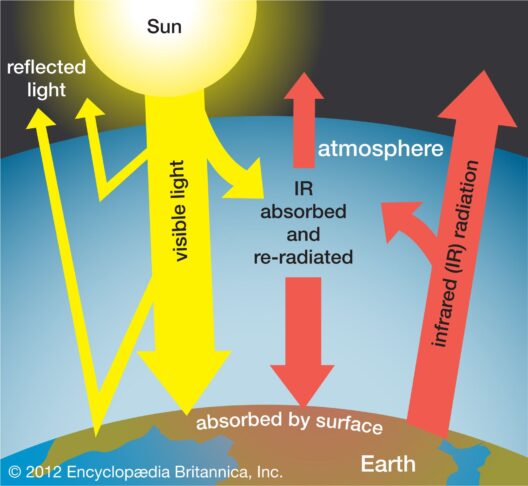In recent years, the intersection of technology and environmentalism has sparked intriguing discussions, particularly regarding the role of compact fluorescent (CF) lights in combating climate change. As global temperatures continue to rise, reducing energy consumption and greenhouse gas emissions has become paramount. Could it be that a simple change in our lighting choices could illuminate a path to a cooler future?
Compact fluorescent lights, commonly known as CF lights, offer an energy-efficient alternative to traditional incandescent bulbs. By utilizing a small amount of mercury and a phosphor coating, CF lights convert electrical energy into visible light more efficiently than their incandescent counterparts. This increased efficiency not only translates to substantial energy savings but also contributes to a significant reduction in carbon dioxide emissions associated with electricity generation.
One of the critical benefits of CF lights is their longevity. A typical incandescent bulb has a lifespan of about 1,000 hours, while CF lights can last up to 10,000 hours or more. This remarkable durability means less frequent replacements, leading to fewer bulbs in landfills and a decrease in the energy needed for manufacturing and transporting new products. When considering the impact of our everyday choices, adopting CF lighting could be a small but meaningful step towards sustainability.
However, as we consider the benefits of CF lights, we should also confront a potential challenge: the environmental impact of mercury. While the quantity within a CF bulb is relatively small, improper disposal poses a risk to ecosystems. This brings into sharp focus the importance of responsible disposal and recycling programs. Can we truly say we are committed to a sustainable future if we neglect the lifecycle of the products we embrace?
Transitioning to CF lights is part of a broader narrative surrounding energy efficiency. The U.S. Department of Energy (DOE) suggests that if every American household swapped out just one incandescent bulb for a CF light, the reduction in greenhouse gas emissions would be equivalent to taking over 1 million cars off the road for a year. This staggering figure underscores the potency of small actions in the fight against climate change. What other simple changes might we overlook that could contribute significantly to our ecological footprint?
Lighting innovations do not stop with CF technology. Light-emitting diodes (LEDs) have emerged as an even more efficient alternative. While CF lights are commendable, LEDs offer greater efficiency, longevity, and lower toxicity. The transition from CF lights to LEDs illustrates the importance of continual innovation within the realm of sustainable technology. It begs the question: how can we ensure that emerging technologies prioritize environmental health as much as, if not more than, profitability?
Moreover, the cultural shift towards energy sustainability fundamentally involves education and awareness. Consumers must be empowered to make informed decisions about their lighting choices. This is particularly relevant for designers, architects, and urban planners who wield substantial influence over infrastructure and environmental design. How might these professionals leverage advancements in lighting technology to enhance energy efficiency not merely in private homes, but in public spaces, schools, and hospitals?
Getting communities involved in the transition to energy-efficient lighting is crucial. Programs that incentivize energy-efficient upgrades can create collaborative momentum. For example, local governments can encourage residents to participate in lighting exchanges or provide rebates for purchasing CF bulbs or LEDs. When communities come together to embrace sustainable practices, the collective effect can be transformational and illustrate the power of unity in addressing climate-related issues.
The potential to curb climate change through improved lighting infrastructure extends beyond individual households and into the heart of commercial and industrial practices. Businesses that switch to energy-efficient lighting can benefit from reduced operational costs while simultaneously contributing to broader environmental goals. The dual advantages of financial savings and environmental stewardship position companies as leaders in sustainability. Are businesses prepared to capitalize on these opportunities, or will they continue to be weighed down by traditional, energy-intensive practices?
Moreover, engaging with lighting technology is just one piece of a much larger puzzle. The energy landscape is evolving, with increasing attention directed towards renewable sources such as solar, wind, and geothermal energy. The integration of energy-efficient lighting in tandem with renewable energy sources can cultivate a more sustainable future. Envision a world where homes and businesses not only consume less energy but also generate their own energy through rooftop solar panels. Can the collective application of these technologies create a self-sustaining ecosystem?
Despite the myriad benefits of CF lights and their modern counterparts, the journey toward energy efficiency is fraught with complexities. It calls for society to address existing technological and ecological challenges while fostering a culture of sustainability. Therefore, as consumers, professionals, and community members, the onus lies on us to advocate for responsible disposal, embrace innovation, and promote education on these critical issues.
In conclusion, the role of CF lights in the global fight against climate change underscores the potential for impactful change in everyday life. Yet this shift must be supported by collective awareness, innovative strategies, and a commitment to sustainability. By harnessing technology and fostering collaboration, we can illuminate a path not only towards energy efficiency but also towards a cooler, more sustainable future.




